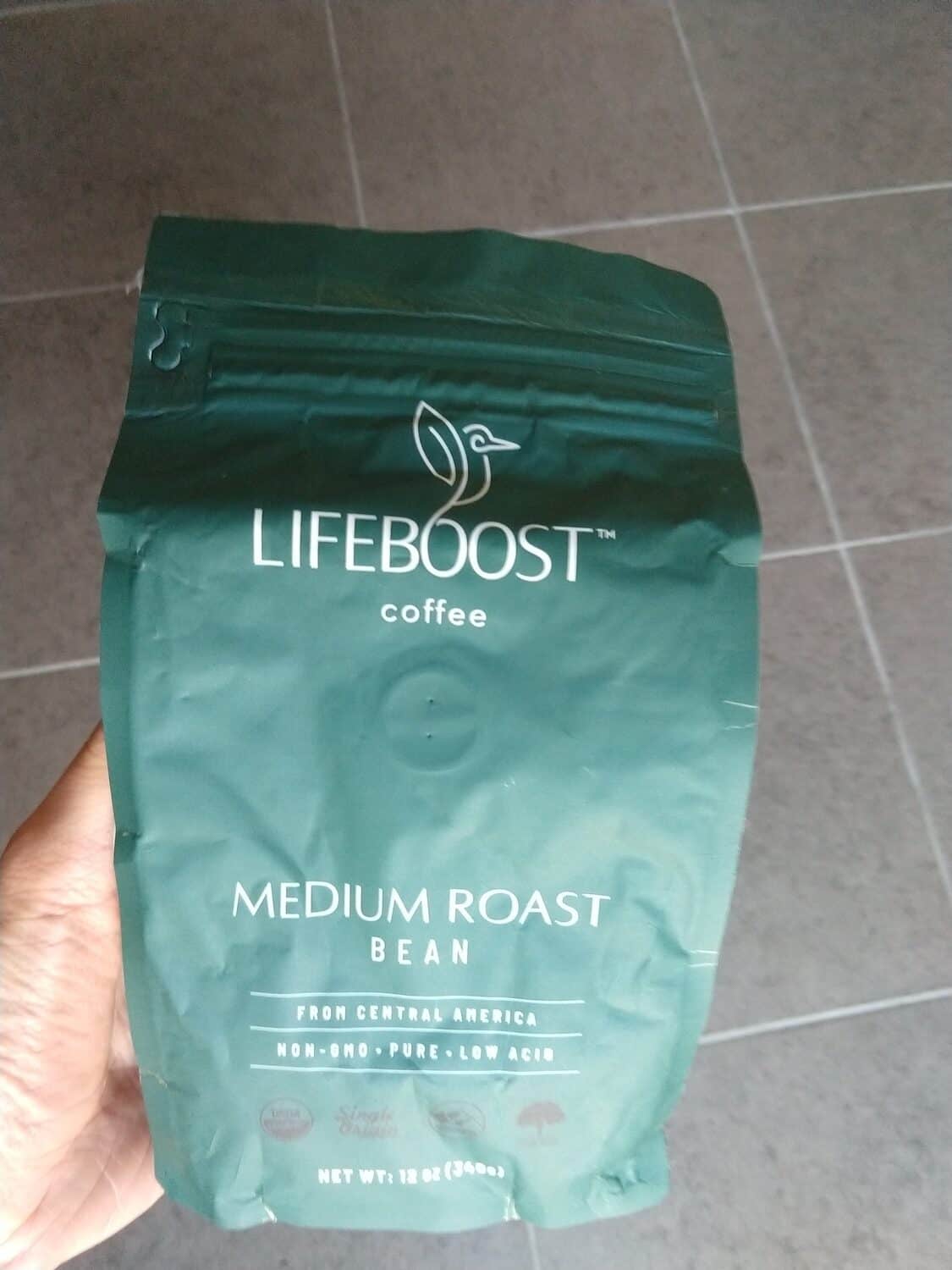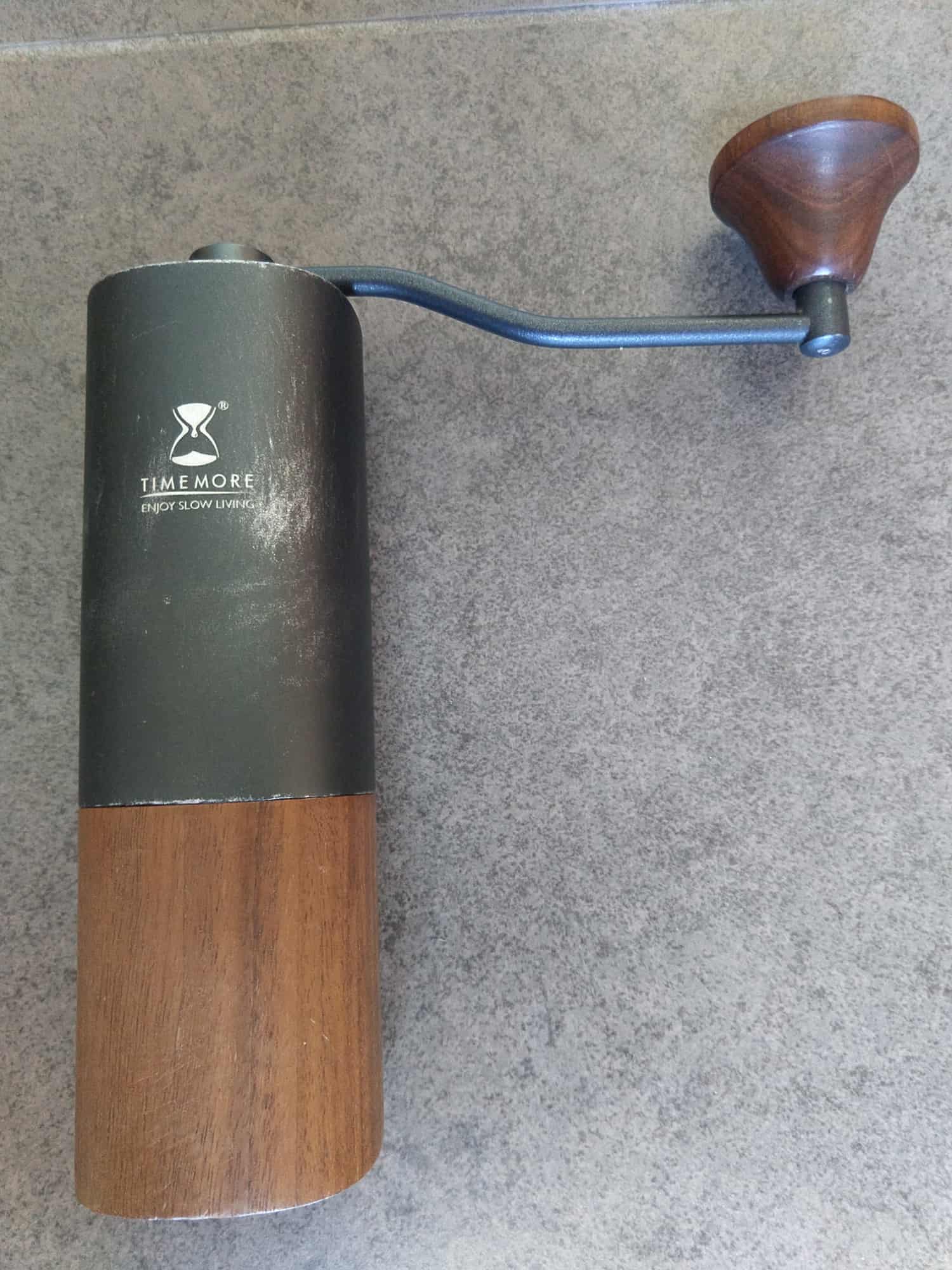AeroPress Review: A Lot To Love About This Unique Brewer
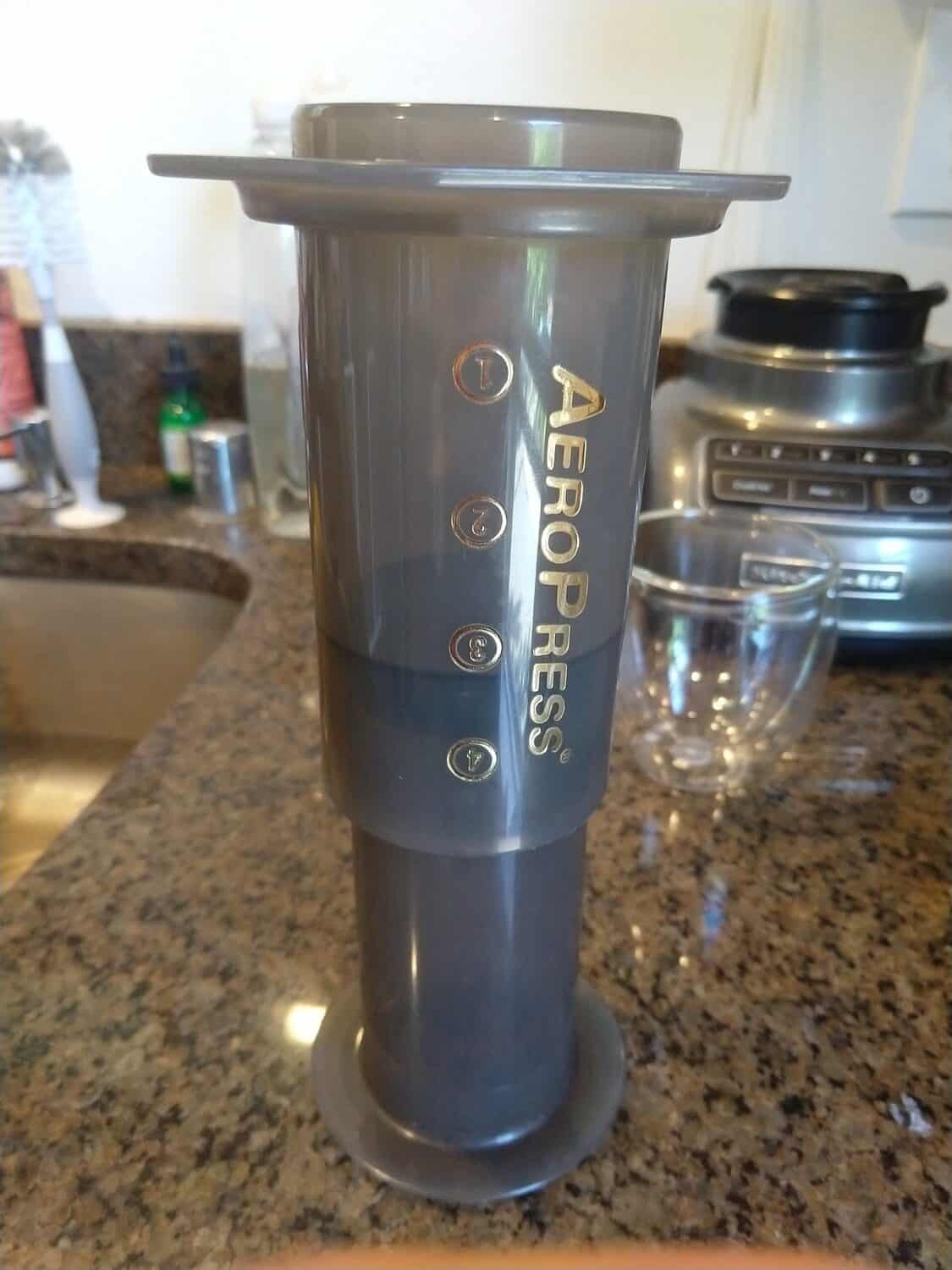
True or false: making great coffee at home requires either a finicky pour-over coffee set-up or a fancy, expensive automatic brewer?
For most people most of the time, the answer is false.
That's good news if you're just getting into brewing coffee at home, or you've struggled to get consistent pour-overs, or your cheap-o coffee maker never does justice to good coffee.
I'm going to share how the AeroPress addresses all that in one fell swoop. As a bonus, it also means you'll never be stuck with hotel or office coffee again.
Verdict: highly recommended. The AeroPress makes it easy to brew great coffee consistently. Of course it's not the only way, but for most people, it's the simplest. It shines in terms of brewing versatility, travel-friendliness, and overall ease of use. Just remember that it's best for 1-2 servings, and it cannot make true espresso.
It's a bit of a quirky device. In fact, it's literally the only brewer of its type, which makes for some unique pros and cons.
Below is my detailed take on what they are, how best to use it, and who'll like it best.
Table of Contents
I'm an affiliate.
I hope my product recommendations make your life a little better! As a member of programs including Amazon Associates, I earn from qualifying purchases. If you do choose to purchase though links here, then I greatly appreciate your support!
What Does The AeroPress Do Best?
It's incredibly convenient
The AeroPress is lightweight, compact, tough, and not expensive. It also works with tiny and dirt-cheap filters that are easy to find.
If that's not a practical package, I don't know what is!
Perhaps even more importantly, it's more of a standalone brewing device than your typical pour-over set-up. A scale and a fancy grinder help, but for reasons I'll elaborate on below, they're far less necessary (which is perfect for traveling).
Good AeroPress coffee requires minimal skill
As much as I love the pour-over brewing process, there's no question that it can be finicky.
Do you have the ideal grind size with an optimal water temperature and a very precise gooseneck kettle?
If not, well, good luck getting the same results twice in a row! For that matter, consistency totally goes out the window in situations like a hotel or office...unless you're crazy enough to pack a scale. (Hey, no judgment; I've seriously considered it!)
It's the sort of thing where great results just require falling in love with the process, as cheesy as that sounds.
And I'm right there. Even so, the AeroPress has a delightful simplicity. Just eyeball coffee amounts by scoop or handful size, eyeball water volume by the markings on its side, and don't even bother with a fancy kettle. You just dump the water in and swirl.
It's not like it requires no thought or attention--after all, it's still a manual brewer. A sloppy, haphazard process still won't yield great results.
But compared to a repeatable pour-over process, the AeroPress demands much less practice or pickiness to make one good cup after another.
(To be totally frank, pour-over masters tend to get better results out of that method. There's a certain delicacy that is more elusive with the AeroPress. It's also harder and more consistent to get right, and for most of us, not worth the effort.)
You get more leeway with grind sizes and water temperatures
I just alluded to this above, but it's worth explaining a little more.
Pour-overs and all other drip brewers rely on gravity to pull the water through the coffee. The water temperature, grind size, filter thickness, and brewer size/shape all affect how quickly the water passes through (and therefore how long it's in contact with the coffee).
Good flavor requires the right extraction time, which requires getting all those things pretty much correct at the same time. Obviously, that takes practice and some extra equipment.
When your circumstances (like travel) don't allow for such precision, the results are all over the place.
But the AeroPress relies on a plunger, not gravity, to determine extraction time. For instance, if you find that medium-grind coffees taste good at around 2:00-2:30 of extraction, then you slowly push the plunger around the 2:00 mark and...voilà.
Warmer/cooler water and a coarser/finer grind still matter, since chemistry is chemistry, but you can force the proper extraction time no matter what. At the very least, this keeps successive cups similar, if not totally identical. Precision always helps, but it's not always possible.
It's your entry into a quirky but cool coffee subculture you never expected
You might be a little surprised to learn that there's a World Barista Championship, but did you know there's even an World AeroPress Championship?
That one even surprised me when I first read about it.
But, lo and behold, there's a thriving (if obscure) niche-within-a-niche of AeroPress gurus who train for head-to-head competition on this humble brewer.
It sounds a little weird, but it's amazing how many brewing possibilities that simple plunger design opens up.
By the way, the winner's recipes section on that site is a great way to take your AeroPress experiments to another level.
What issues does the AeroPress have?
Even ingenious and time-tested designs like the AeroPress still have their issues.
Indeed, the benefits come at the cost of a couple of trade-offs.
I use mine almost every day regardless, but keep these in mind before you decide to get one.
It can't make much at once (but there's a trick)
The overwhelming disadvantage to an AeroPress is that it's basically limited to one large cup of coffee.
I'd say roughly 8 ounces/240 ml, give or take a bit.
If you want to serve multiple people in one batch, you're out of luck.
It's best for personal use or, at most, for making small cups for two people.
However, there is a workaround for at least three or four cups.
If you're stuck with or set on using an AeroPress for a group, you can still make it work.
- Use the amount of coffee the full batch requires
- Brew it with as much water as you can comfortably fit
- When you've pressed all the water out, slowly remove the plunger
- Add the remaining water
- Let it sit for a minute, then press the rest out
Granted, it's a little awkward, but I've successfully used it more than once.
(I can't remember where I came across this trick, but if any readers know who first shared it, then please let me know!)
It doesn't (easily) work with every mug
If the rim of your mug is less than about 65mm or more than about 90mm, the AeroPress won't fit securely.
Pour-over drippers have some constraints as well, but most are more accommodating.
That said, there's a trick here, too.
(Notice how there's a trick for just about everything with the AeroPress? To each his own, but I'd say that's half the fun!)
Anyway, you probably realized that the included funnel helps you get ground coffee cleanly into the brewing chamber.
It also serves as an adapter, of sorts, that lets the AeroPress sit in a mug that's narrower or wider than recommended.
However, it doesn't seat as firmly as when you use the AeroPress alone. That makes it a little potentially unstable when very full and/or when you press.
Proceed with caution and you'll be fine, but it's a minor drawback to keep in mind. (And it's also a little annoying to travel with the funnel, which takes up a fair amount of space for a pretty trivial part.)
Speaking of mugs, avoid anything with thin walls. It's better to press gently anway, to avoid forcing coffee particles around the sides of the filter, but it's also critical to press gently if you're not using a sturdy ceramic or metal mug.
That's doubly true if you're pressing through the funnel, like I mentioned above. The funnel turns some of your downward pressure into outward pressure, which could turn a lightweight cup into a pile of chards.
The silicone plunger seal wears out
This is more of an "FYI" than a real caveat, but remember that the plunger is a wear-and-tear part.
Silicone rubber does get slightly firm and non-compliant after several years, depending on your climate and how you care for it.
Eventually, it doesn't quite seal 100%, and you might notice minuscule flecks of rubber adhering to the sides of the brewing chamber.
Fortunately, they're just a few bucks. If you notice wear or aging, then go here to get a replacement directly from the manufacturer.
Quick Tips To Enjoy Your AeroPress
As I've said, there are lots of cool tricks to make AeroPress coffee better, more convenient, or simply more fun and interesting.
Here are a few things I've enjoyed or found helpful.
The inverted method
If you follow the manufacturer's instructions, you'll place the brewing chamber right-side up on your mug.
The only problem is that gravity drains some of the water out before it's properly extracted. (And their recommended water temperature is way too low, but that's another matter.)
You can mitigate that by edging the plunger seal just slightly into the top.
But the better way is simply to brew with the whole thing upside-down. It retains every drop of water. You then flip it over and place it on your mug only when it's time to press.
Here's how I do it.
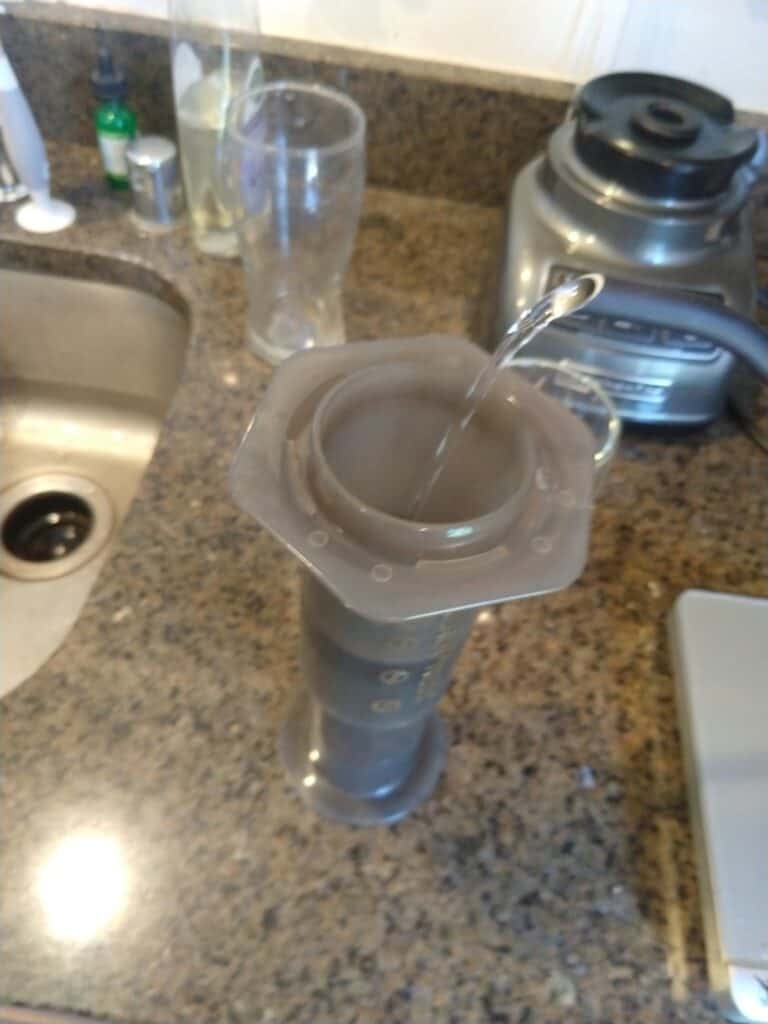
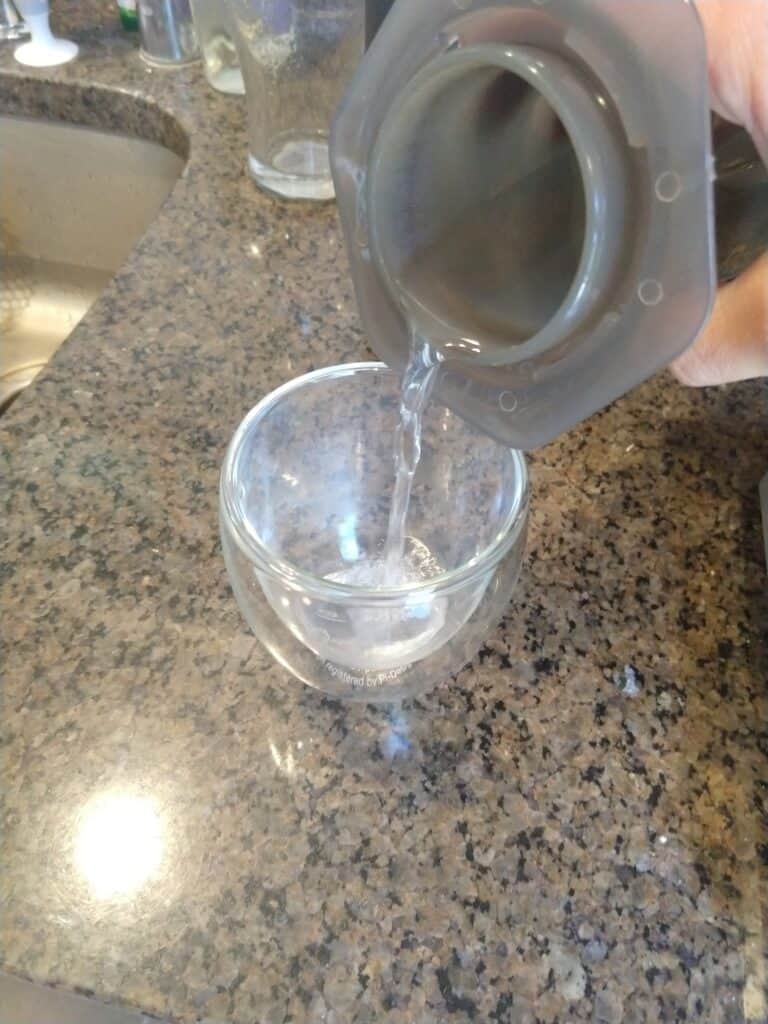
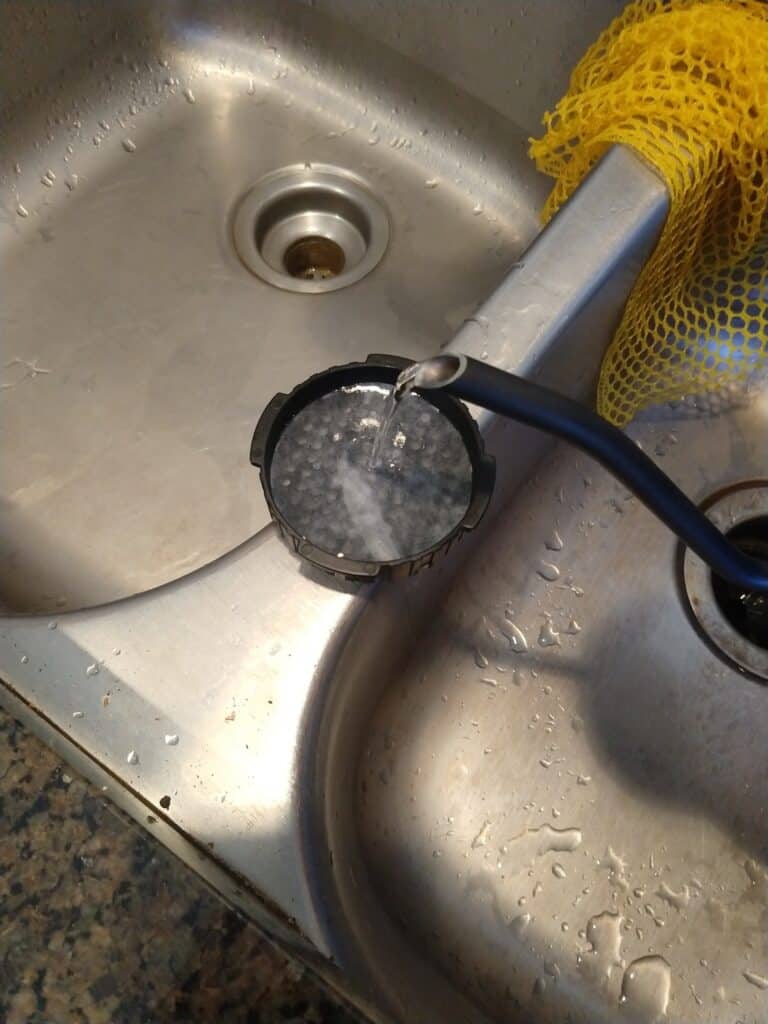
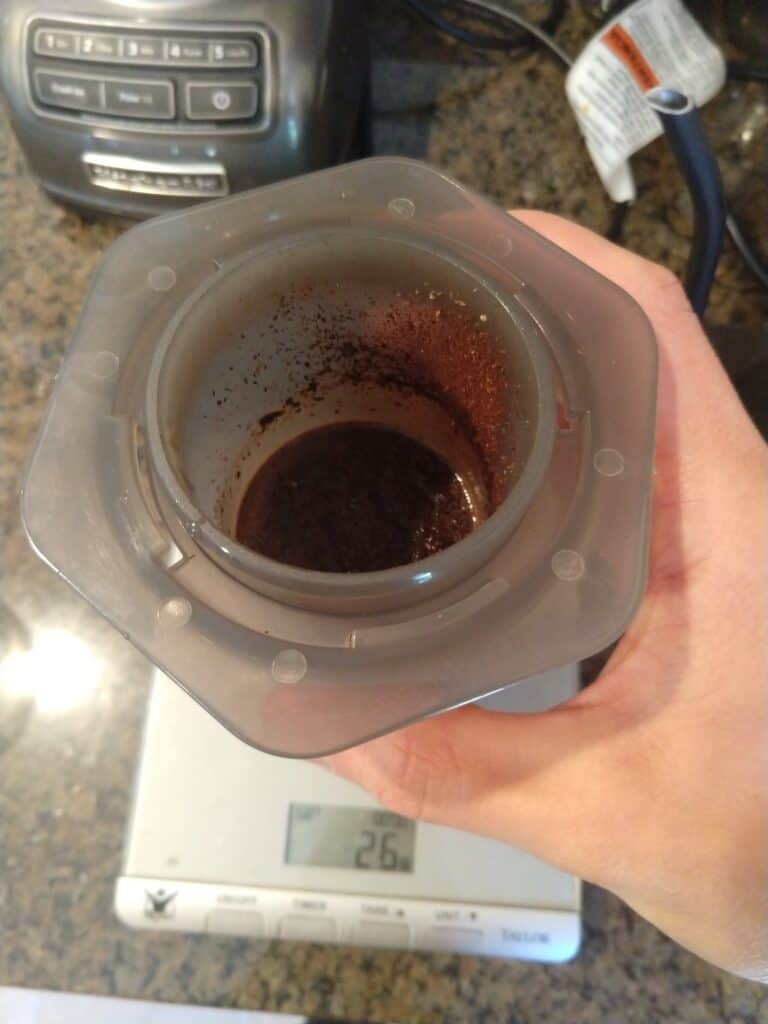
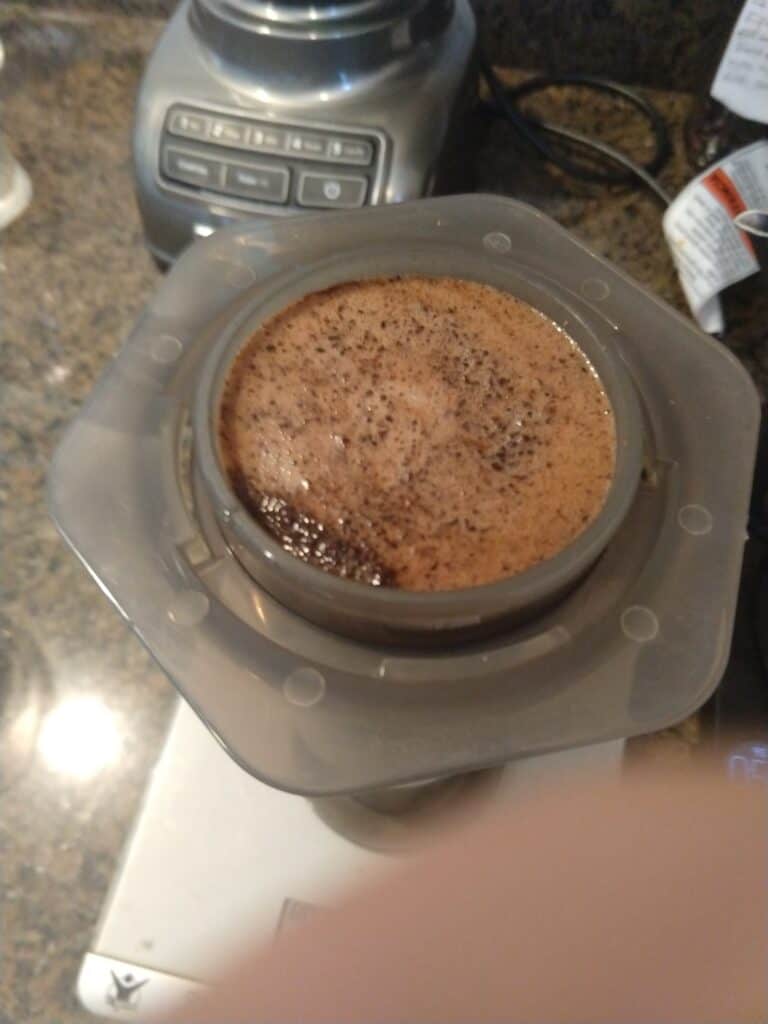
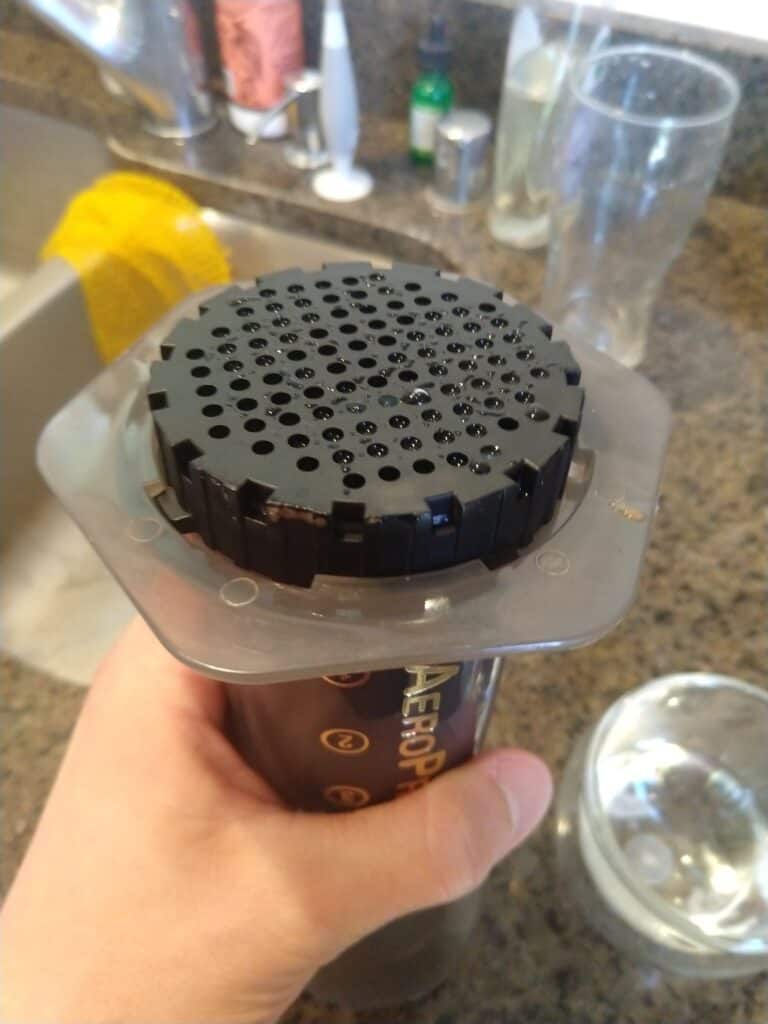
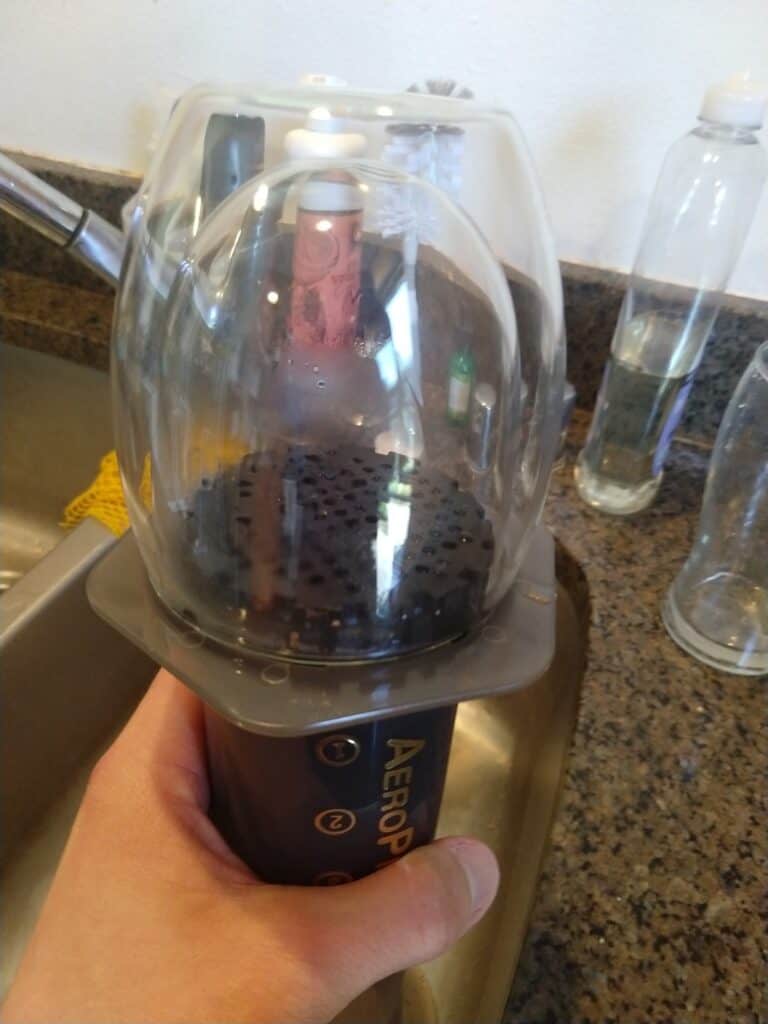
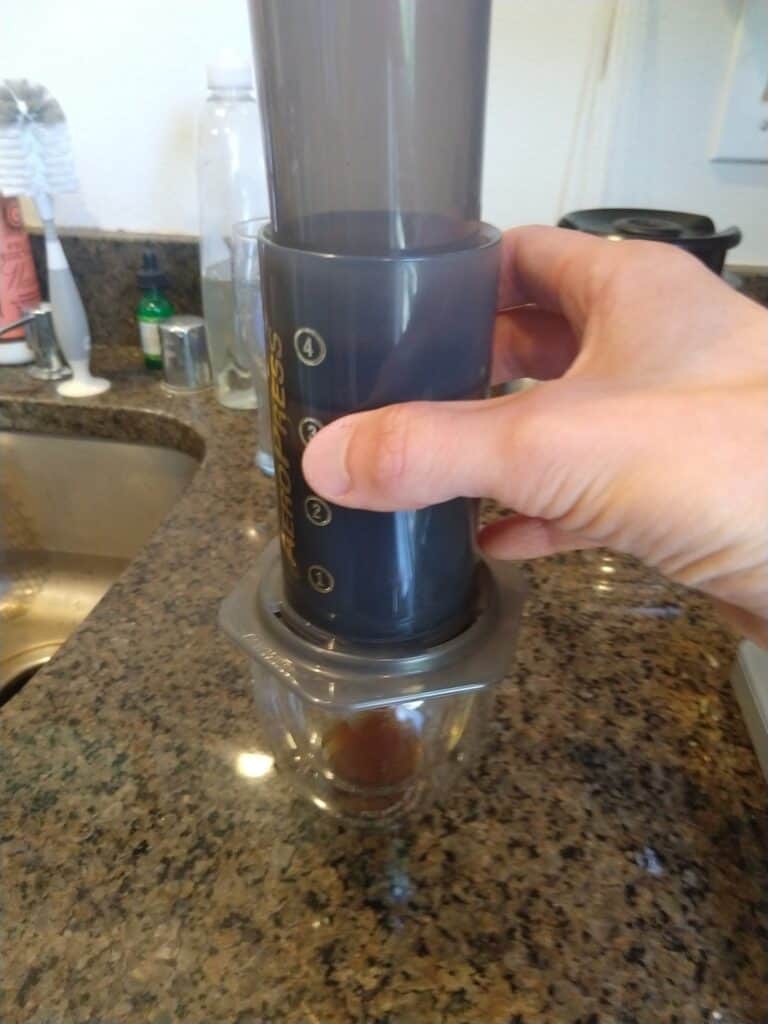
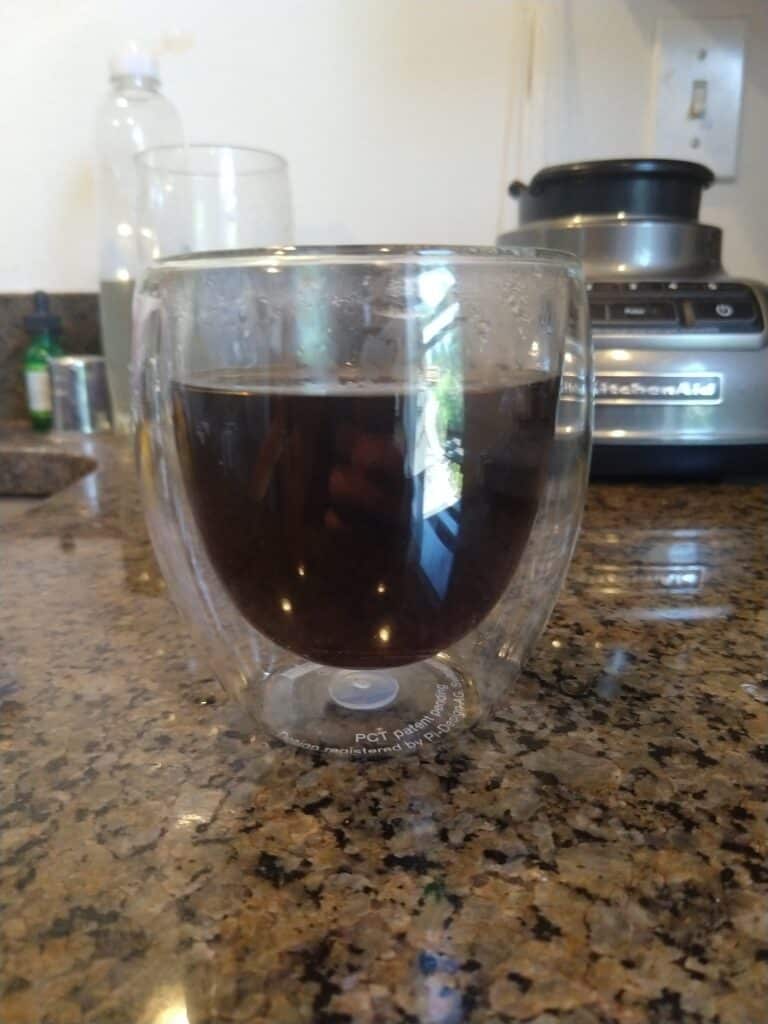
Cool accessories
In keeping with that spirit of experimentation, you can also buy fancier filters and attachments from several companies. Here are my personal favorites, which any regular AeroPress user will probably enjoy.
Aesir makes much thicker paper filters than give an extremely clean cup. I find they're best for light-roast coffees with a coarser grind, near-boiling water, and a longer extraction time.
Able sells a popular, reusable metal filter. It's helpful for traveling, since running out of filters is a non-issue. But the bigger feature is that metal doesn't absorb coffee oils or tiny particles like paper does. Done right, this can create more body and sweetness in dark- and medium-roast coffees, in my opinion. Just don't grind too finely, or you'll have a sludgy mess!
Last for now is the Fellow Prismo. It's a replacement filter holder/cap with a metal filter and, most importantly, a valve for slightly increased pressure. The idea is to get a little closer to the mouthfeel and concentration of espresso.
Does it work? Well, true espresso isn't physically possible in an AeroPress. But with some experimentation, I can get something that resembles a very, very long espresso shot.
There are others worth covering in another article. The AeroPress community--and I do think the word "community" applies here--frequently comes up with clever add-ons that make owning an AeroPress that much more fun.
A couple useful travel grinders
Speaking of accessories, nothing affects your coffee more than the grinder.
Yep, seriously.
Besides the beans themselves, of course, the biggest factor is how consistently the ground particles come out.
That topic is a little complicated, but here's the short version.
Coffee grind size affects how quickly water dissolves the flavorful compounds in the coffee. Uneven grind size means a mix of under- and over-extracted bits, neither of which taste quite right.
I mentioned earlier that the AeroPress is really forgiving of grind sizes, and that's still true. However, uniform grind sizes (however coarse or fine) will always extract more evenly than randomly sized ones.
Anyway, the AeroPress is so popular that (as of writing) at least two high-end hand grinders fit right inside its plunger for easier packing. These are the Timemore Slim and the Knock Aergrind.
I personally use the Timemore Slim's big brother every day, and reviewed it here. The Slim has the same burrs (as far as I can tell) and should grind identically.
The Knock is also well regarded in coffee snob circles.
Both are a travel-friendly size, making them perfect for AeroPress users who are regularly on the road.
(Some cheaper grinders may also fit in the AeroPress, but I've yet to encounter anyone who still preferred them after trying a Timemore and/or Knock.)
In Conclusion: Who Should Buy An AeroPress?
My honest but unhelpful answer is: everyone.
But that's a bit of a cop-out, so I'll elaborate.
It's approachable for specialty coffees newbies, it's versatile enough for enthusiasts to get great brews from many beans in many ways, and it's unbeatable for travel convenience.
But while that's true, it's a bit of a cop-out...so here is some more nuance.
If you don't have the gear (or patience) for fussy pour-over brewing, then the AeroPress gives comparable results. Not identical, especially with very light roasts that just seem to do better with percolation brewers, but still excellent.
With an aftermarket metal filter like Able sells, it also gets close to the mouthfeel and flavor of a French press. Much more versatile and easier to clean, though!
Finally, if you need something unfussy yet consistent for travel, then the AeroPress is again my first choice.
If travel is your only use, then check out the new AeroPress Go. It loses some capacity but comes in an even more compact package, with its own mug, to boot.
However...it's probably not for you if you need to brew large batches at a time. It's feasible to top off the water and keep brewing, but not remotely elegant or precise.
It's not a cheaper alternative to an espresso machine, either. As mentioned earlier, you can sort of approximate espresso, but we're talking apples and oranges. For perspective, Arnold Schwarzenegger in his prime probably couldn't press an AeroPress with a quarter of the pressure of a typical espresso machine.
Long story short, the AeroPress is a good deal on a one-of-a-kind brewer. I'd sum it up as:
- The simplicity and consistency of a small French press…
- The clean brew and easy clean-up of a pour-over cone…
- With cool accessories…
- In a travel-friendly package.
That's hard not to like.
If you'd like to try one, then see if a local coffee shop carries them. Many do, and it's great to support them when possible.
But if not, then you can always find it here online.
Then, above all, go have fun and enjoy great coffee in the process!

